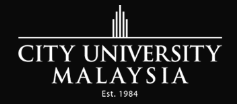Strengthening design literacy by pondering on format, structure and navigation
January 3, 2014 | Campus NewsBy cultivating an understanding on the format, structure and navigation aspects of designs through fantastic analogies, advertising expert Leon Leong has reinvigorated The One Academy students’ determination to strengthen their design literacy.
Designs are meant to solve problems and enhance communications. Thus besides marvellous artistry, an understanding of the objective of their designs would help greatly too. For The One Academy that aims to nurture market-ready graduates, a wide knowledge on the subject matter is highly celebrated.
In order for designs to serve its purpose, designers have to decide on the most suitable format, which included the physicality, practicality, dimension of the proposed design. For Japanese that have to break through the spatial constraint constantly, utilising space creatively without jeopardising the comfort is vital, and many buildings and shops actually succeeded in it.
Many aspects ought to be taken into account when one ponders on physicality, for instance space, shape, form, extent, material, ambience, finishes etc. As for practicality, it included considerations on protection, containment, addition, promotion, portability. Sometimes, size itself becomes the selling point, such as pocket size Bible. In fact, anything that looks narrow and elegant exudes a feeling of consciousness.
Structure affects the way we perceive the world, and this is apparent in many forms of arts, including architecture, painting, literature, and film. The way we enter a building reflects on the guests’ perception on the hosts, as seen in traditional Malay architecture, where living rooms are always preluded by verandahs. Another example is the Bangladesh Parliament complex designed by renowned architech Louis Kahn, where perforated walls protects the interior spaces from direct sunlight, allowing passive ventilation, and more importantly, focuses people’s view towards common good. Exposure such as this and many others have constantly enlightened students on their way to attain ‘Just World Class Results’, as envisaged by The One Academy.
Early Renaissance painter Piero della Francesca tried to tell the story from Adam and Eve to Salvation in an interesting way. In The Legend of the True Cross, a sequence of frescoes he painted in the Basilica of San Francesco, Arezzo, Italy, he recounted a popular legend, where people believed that at the time of Adam’s death, his son planted an apple tree using seeds Adam brought from the garden of Eden. And many generations down the road, the timber from this apple tree was turned into the cross on which Jesus Christ was crucified. The frescos depecting the different episodes were placed without following the chronology, giving greater emphasis to the two battles where Christianity triumphed over paganism.
Literature is the best art to showcase the significance of proper structure, stressed Leon, who is a literature lover and novelist too. Take Czech writer Milan Kundera’s Unbearable Lightness of Being as example, it posits that since each of us has only one life, and we won’t know about the consequences of our decisions before decisions are made, our being is indeed ‘light’. Through the speed and rhythm of the storytelling, one learns the significance of the structure. The same goes for the great works of Austro-Hungarian writer Franz Kafka, who once said ‘The meaning of life is that it stops’. Obviously, as outlined in The One Academy’s renowned ‘Masters Train Masters’ philosophy, students were prodded to obtain more knowledge in a wide range of fields.
Some metropolises, such as Manhattan, New York are laid out in perpendicular grids, while others such as Paris are formed by a network of circular thoroughfares. Whether it is the design of magazines, websites or wayfinding systems, structure is an important component to consider in the design. For example, websites should be constructed with users’ convenience and the ease of regular updating in mind, thus information ought not to be hidden under too many layers of structures.
It was said that smarter person gets higher to get an overview, but the question is, whether mentality affects design, or is it the other way round? For students preparing their portfolio, should they show their best or worst work first? Some anticipate potential employers to be delighted if they could see an improvement from project to project, but what if the interviewer has little time to go through the whole portfolio?
Leon began the third talk, titled Navigation by stating that ‘The fastest way may not be the best way’, but many people nowadays have succumbed to ‘intellectual fatigue’. He elaborated that in navigation, designers usually plan a course to communicate certain ideas, by guiding people on where to focus. Many examples were mentioned, including Memorial to the Murdered Jews of Europe (Holocaust Memorial) in Berlin, Germany, where many huge concrete blocks conveyed the message that Nazi has lost the sense of humanity.
Another example was Brasilia, the planned capital of Brazil. Lúcio Costa and Oscar Niemeyer gave Brasilia a modernist look, with equality of every citizen in mind. A river acts as the natural boundary of the downtown, providing a sense of space to the dwellers.
On the other hand, in Santorini, Greece, an ancient coastal town on the hill slope often raid by pirates, all houses were painted white in order to complicate the navigation of the pirates. Each of these places was bestowed with a navigation system to fulfill a peculiar objective, and to deliver a meaning, where people could focus on the intricate details without losing the bigger picture of the overall context.
In London, there is a city ordinance requiring planners and developers to think about ways to turn London into a pedestrian-friendly ‘walking city’, while over here in Kuala Lumpur, even in Brickfields there was very little consideration for the blind. Apparently, that reflects the mentality of those who run the place. For designers, how the content pages of magazines are organised, portrays how we guide our readers too. It’s indeed a timely reminder for The One Academy students nurtured under industry-driven syllabus and practical coaching approach, as it requires more than lectures and tutorials to be an outstanding savvy designer.
Leon highlighted the layout of Chinese gardens, incorporating superb navigational techniques. There are usually artificial hillocks created with ‘designer rocks’, with walls to form a secluded retreat, ponds to reflect scenes, while zig zag bridges, pavilions and vintage points were meant to gather visitors’ thoughts. Besides, framed windows and moon gates were also used to focus views and change feelings. It is a awesome example for students to emulate.
By highlighting various interesting knowledge from a wide array of arts, The One academy students were reminded designers must be knowledgeable to create suitable solutions to actual problems people are facing. Concurring with Leon’s view, Advertising and Graphic Design lecturer Debbie Chin opined that design students should read widely. With seminars such as this, it’s no secret that The One Academy graduates always stay ahead of their peers!View Other categories: NATIONAL | CAMPUS | ACHIEVEMENT | EDITOR'S DESK























